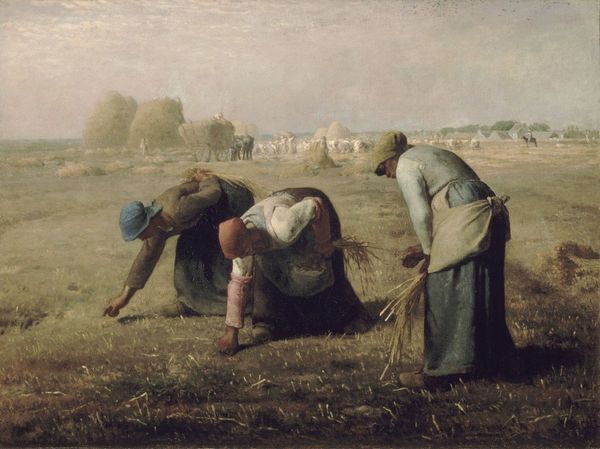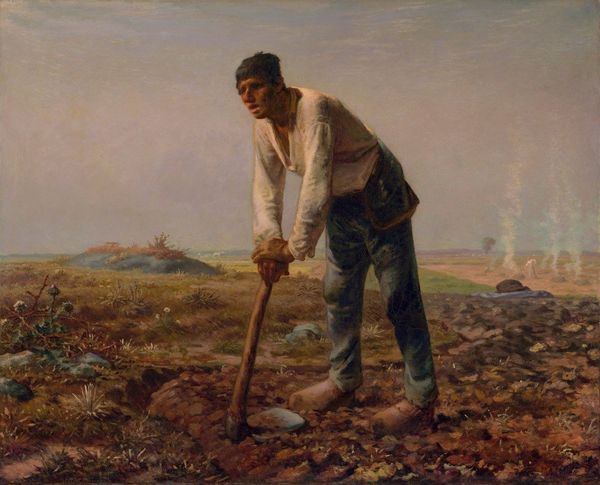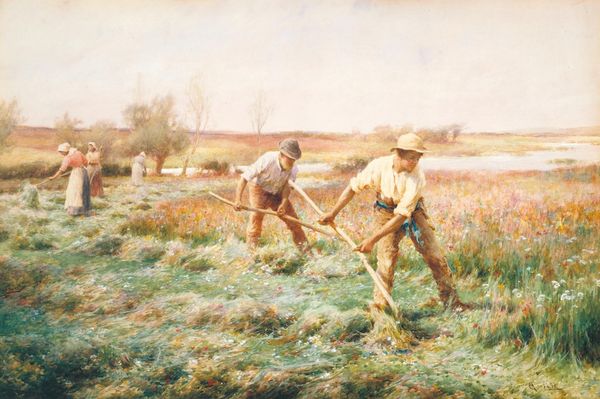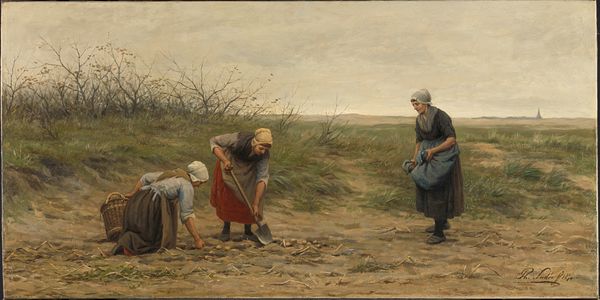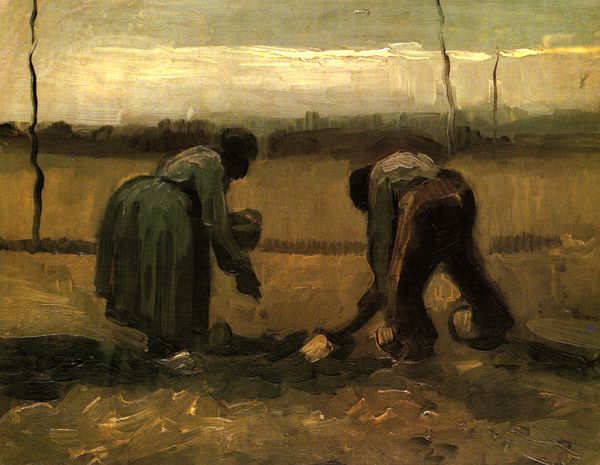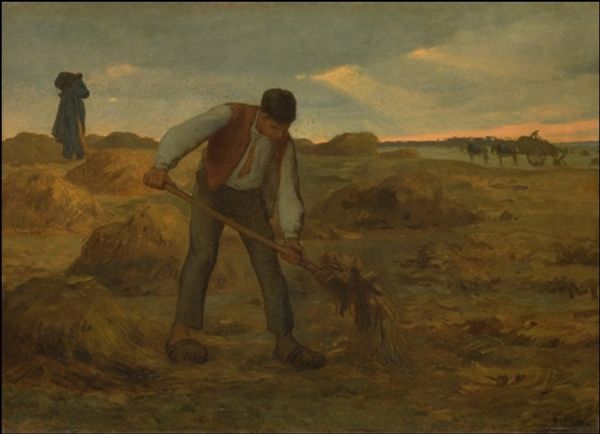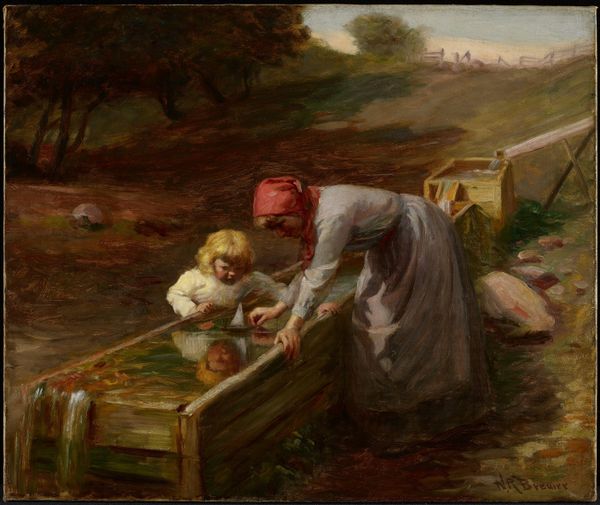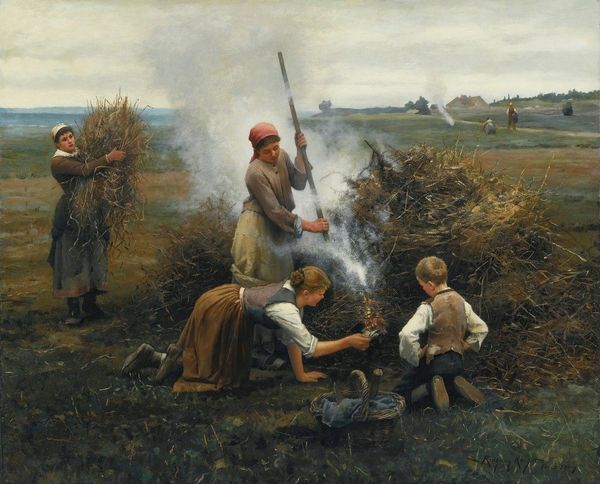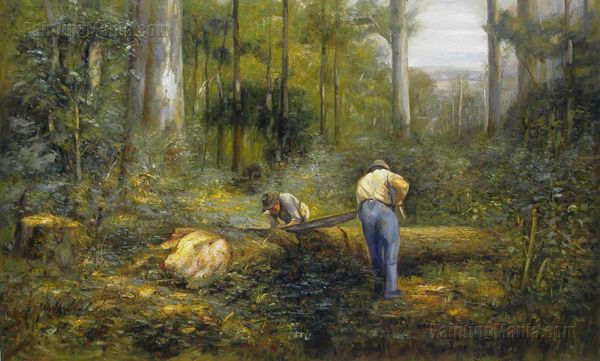
Copyright: Public Domain: Artvee
Curator: Look at this canvas—it is Millet’s *Potato Planters*, dating back to about 1861. Notice the earthy tones, typical of his work with its oil paint. It gives a vivid picture of rural life. What catches your eye first? Editor: It’s so brown! It’s all earth and toil. You can almost smell the dirt, can't you? It evokes the hardship, yet there is a stark beauty in the simple act they perform with this land. Curator: Absolutely, Millet elevated the peasant to heroic status in his compositions, this really brings a sense of dignity to rural existence, which has deep cultural echoes within Romantic and Realist traditions. The potato itself, initially mistrusted in Europe, became a symbol of sustenance. Editor: A political statement through tubers! But honestly, the repetitive act of planting seems kind of meditative. Look at their gestures! Patient, rhythmic, like they're dancing with the soil. You can tell Millet observed real labor to reflect the toil they bear within their bones. Curator: You see the essence! Millet uses their poses to convey the physicality of this labor—he also does something psychologically revealing: neither worker has eye contact or emotional interplay with the viewer; we look on this landscape that sustains them as the scene that witnesses their effort. They perform their role. Editor: It makes me wonder about their story. Do they find meaning in the land, or is it simply back-breaking work? Look there’s even a sleepy donkey tethered beneath the tree in the background. You just want to go pat it, I swear, but, in so doing, you realize that every inch of this canvas has seen years of planting season. Curator: The presence of that donkey certainly underscores the rhythm of seasonal change in Millet’s overall depiction. He uses simple iconographies for figures representing hard-won survival through working in accord with nature, this canvas feels like a time capsule! Editor: Yes. It is a celebration—though, dare I say, perhaps an idealized celebration—of an agrarian life, its sacrifices and all the unspoken hopes it quietly cultivates within us. What do you suppose, could they have imagined their own portrait? Curator: It reminds us that even in seeming mundanity, we see echoes of primal necessity. This canvas honors both human resilience, our ancestors and that innate connection to the land that has shaped cultural landscapes—for millennia! Editor: What a beautiful echo chamber a painting can be, for that sort of thing... This visit left me strangely moved. I might need to get myself a little plot and some spuds.
Comments
No comments
Be the first to comment and join the conversation on the ultimate creative platform.
